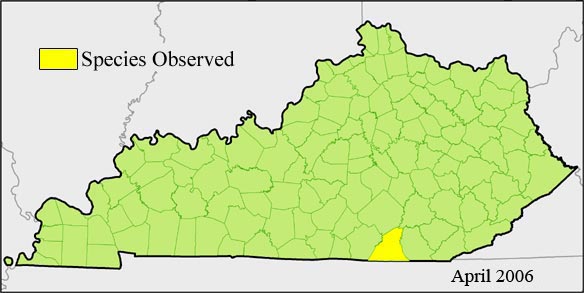P�h�o�t�o� �b�y� �B�.� �E�u�g�e�n�e� �W�o�f�f�o�r�d� �@� �T�E�N�N�
|
Habitat:
Primarily found along the flood-scoured banks of large, high-gradient rivers in Kentucky but also reported from creek banks, bluffs and floodplains elsewhere in its range.
|
Species Description:
Perennial herb.
|
Phenology:
Flowering Period: Early June to late July.
|
Additional Information at NatureServe
|
Diagnostic Characteristics:
The leaves may be all basal or a few alternate on the stem. They lower ones are long-petioled and with 3-nerves. The flowers heads are solitary on a single peduncle 1-3 dm in length. The flowers are white to light blue and have an elongate hairy tube that is lobed at the end. In Kentucky, this species is found on gravel/boulder bars.
|
Management:
Avoid changes in moisture/hydrologic conditions at the site. Changes could result from overstory removal, stream/wetland alteration or vegetation removal that would result in increased erosion. Disturbance such as ATV trails, timber removal or any activity that results in increased erosion and weed invasion will be detrimental. Exotic pest plants are a threat to this species and should be removed. Avoid creating access to the site through trail or road construction.
|
Global Range:
Historical range: "Occurring along rocky river and lake shores, creek banks, bluffs and flood plains in moist to wet sandy soil and in medi-acid soil of Coastal Plain-like "bogs", uplands from southwestern Pennsylvania southward through West Virgina into southeastern Kentucky, east-central Tennessee and southwestern North Carolina, (Map 1), (Channell, 1957). Present Range: Pennsylvania (Fayette County), West Virginia (Barbour, Nicholas, Preston, Randolph, Upshur, Greenbrier, Summers, Marion, Monogahela counties), Kentucky (McCreary), Tennessee (2 counties). Suspected to occur in Maryland, but none found to date.
|
Known Kentucky Occurrences:

|